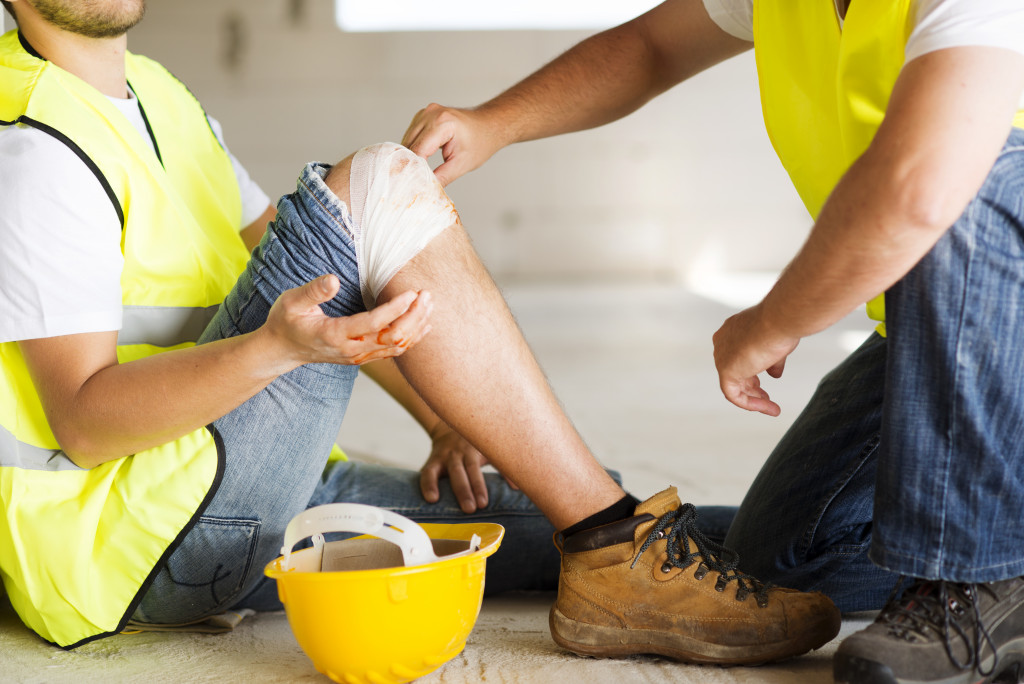- Construction site falls carry serious risks, including injuries, increased medical costs, and potential legal action.
- Falls can significantly hamper productivity, contribute to wage loss, and lead to costly worker retraining.
- A fall incident can damage a company’s reputation, negatively affecting its ability to secure future contracts.
- Fall prevention involves adequate safety training, proper footwear, and clean work environments.
- Using heavy equipment chains and rigging can also enhance worker safety by preventing falls and falling object incidents.
As a construction company owner, safety is always a top priority. You implement policies and procedures to ensure your workers are safe and free from harm while on the job site. However, falls can happen in an instant, even with all the safety precautions. Falls not only pose a risk to the workers, but they can also pose a risk to your business. Here’s what you need to know about falls, slips, and trips in the industry, how they can cost your company, and how to prevent them in the future.
Falls in The Construction Industry
It’s estimated that there were more than 90 fall-related incidents in 2021 the construction industry alone. These incidents can range from minor scrapes and bruises to severe injuries, such as broken bones or head trauma. Some falls even prove fatal.
The most common causes of workplace falls include:
• Slippery floors
• Inadequate safety equipment
• Poorly maintained ladders or scaffolding
• Unstable or faulty equipment
• Unsafe working environment
The Hidden Costs of Falls in Construction
Falls can have a significant impact on construction companies. Here are some of those impacts:

1. Medical Costs
Medical expenses are the first cost you’ll likely incur when a worker falls. It’s estimated that medical cost claims have reached nearly $100,000 per accident. This may include ambulance rides, emergency room visits, doctor’s fees, medications, and rehabilitation. These costs can add up fast and impact your company’s workers’ compensation insurance premiums. It’s essential to take proactive measures to prevent falls from happening.
2. Lost Wages and Productivity
If a worker falls and cannot work, you’ll have to cover their lost wages until they can return. This can be costly, especially if the worker is out for an extended period. Additionally, workplace productivity will suffer if a skilled worker is out of action. Deadlines get missed, and production gets delayed, resulting in significant financial losses for the company.
3. Lawsuits
Workers who fall and suffer an injury may decide to pursue legal action against your company. This can be a costly process, even if you win the lawsuit. Legal fees, court costs, and settlement fees can consume a large part of your company’s budget. This is why it’s important to consider implementing a comprehensive safety management system to avoid legal hurdles.
4. Damaged Reputation
A fall on your worksite can lead to adverse publicity, hurting your company’s reputation. Clients may choose to go elsewhere once the news of an accident comes out to the open. A low reputation can lead to a lack of opportunities to win contracts. In the long run, a damaged reputation can lead to a financial crisis for your business.
5. Time and Training Costs
After a fall, your company may reassign workers to different tasks or train new employees to replace the injured worker. These costs can add up to more than the costs of preventing falls in the first place. This emphasizes that safety training is necessary, even for the most seasoned worker.
Ways to Reduce Falls
It’s good to prevent falls in the construction industry. Here are some best practices you can implement to reduce falls:
Chains And Rigging
If you’re handling building projects, you must have chains and other rigging equipment for your workers. Reliable heavy equipment chains can give your workers two main benefits. First, it can keep them safe from falling objects or debris. Second, it can prevent workers from losing their footing due to an accident.

Wear Appropriate Footwear
Making sure that your workers are wearing appropriate shoes is a must. They should be wearing sturdy footwear with good traction and slip-resistant soles to reduce the risk of falls on slippery surfaces. This is especially true when working in wet conditions.
Keep the Worksite Clean
Clutter and debris on the job site can easily cause falls. Keep your worksite clean and tidy by having a designated dumping area or a skip for waste disposal. Additionally, ensure all tools, ladders, and other equipment are put away after use to avoid trips or slips.
Provide Adequate Training
Provide all your workers with adequate safety training before they start working on a project. This should include fall prevention techniques, safety equipment use, and recognizing hazardous conditions. Safety briefings are also crucial for new employees or visitors to the job site.
Construction falls can cause various problems, from medical expenses to damaged reputations. Taking the proper steps and implementing safety policies can help reduce falls in your company. With these steps, you’ll ensure your business is safe and profitable.

